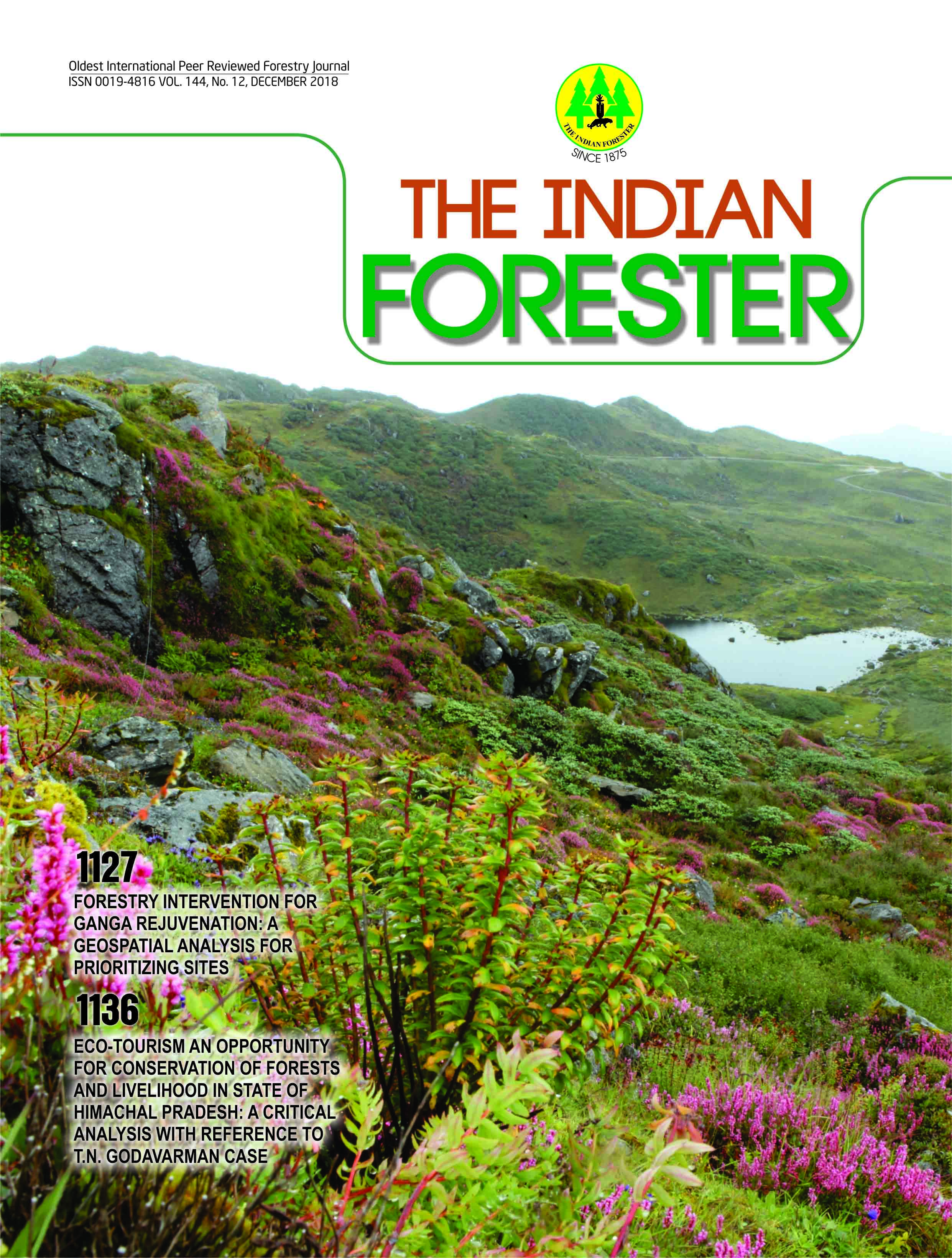Studies on Some Promising Fodder Plants of Hassan District, Karnataka
DOI:
https://doi.org/10.36808/if/2018/v144i12/141865Keywords:
Fodder plants, Rural people, HassanAbstract
The present communication describes 87 fodder plant species belonging to 83 genera and 34 families which are the sources of fodder. The local name of the plant, period of availability, occurrence, part used and other details with pertinent comments are enumerated. Family Poaceae was represented by 26 species, followed by Fabaceae and Moraceae (6 species each). The most preferred fodder plants as perceived by informants revealed that Echinochloa crusgalli was the most important fodder species.References
Bahru T., Asfaw Z. and Demissew S. (2014). Ethnobotanical study of forage/fodder plant species in and around the semiarid Awash National Park, Ethiopia. J. Forestry Research, 25(2): 445-454.
Bharti V.K., Giri A., Rinchon T., Singh R.K., Chaurasia O. and Kumar B. (2016). Potential fodder plants of cold arid high Altitude region for livestock feeding in health and production: A review. IOSR. J. Agriculture and Veterinary Sciences, 9: 90-96.
Bhat K.G. (2014). Flora of South Kanara (Dakshina Kannada and Udupi District of Karnataka). Taxonomy Research Centre, Department of Botany, Poornaprajna College, Udupi.
Chettri N. and Sharma E.A. (2009). Scientific assessment of traditional knowledge on firewood and fodder values in Sikkim, India. Forest Ecol. Manag., 257:2073-2078.
Dhyani S., Maikhuri R.K. and Dhyani D. (2011). Energy budget of fodder harvesting pattern along the altitudinal gradient in Garhwal Himalaya, India. Biomass Bioenergy, 35:1823-1832.
Gaur R.D. (1999). Flora of District Garhwal North West Himalaya (With ethno botanical notes). 1st ed. Srinagar Garhwal, India.
Gaur R.D., Semwal J.K. and Negi K.S. (1983). Traditional Fodder Yielding Plants of Garhwal Himalaya and their Impact on Quality and Quantity of Milk. JOSHRAD, 6: 89–93.
Gemedo D.T., Maass B.L. and Isselstein J. (2006). Rangeland condition and trend in the semi-arid Borana lowlands, Southern Oromia, Ethiopia. Afr. J. Range Forage Sci., 23: 49-58.
Geng Y., Ho G., Ranjitkar S., Wang Y., Bu D., Pei S., Ou X., Lu Y., Ma X. and Xu J. (2017). Prioritizing fodder species based on traditional knowledge: a case study of Mithum (Bos frontalis) in Dulongjiang area Yunnan Province, Southwest China. J. Ethnobiol. Ethnomed., 13: 24.
Gowda R. (2002). Working plans for the Hassan forest division (For period of 2001-02 to 2010-11), Karnataka Forest Department, Aranya Bhavana, Malleshwarum, Bangalore.
Kannan E. (2012).Economics of production, processing and marketing of fodder crops in Karnataka. Research Report: IX/ADRTC/142. Agricultural Development and Rural Transformation Centre, Institute for Social and Economic Change Bangalore, 1-89pp.
Martin G.J. (1995). Ethnobotany: A Method of Manual. London: Chapman & Hall, 268 p.
Nautiyal M., Tiwari J.K. and Rawat D.S. (2017). Exploration of some important fodder plants of Joshimath area of Chamoli district of Garhwal, Uttarakhand. Current Botany, 8: 144-149.
Nunes A.T., Pavia de Lucena R.F., Ferrieria dos Santes M.V. and Albuquerque U.P. (2015). Local fodder plants in the semiarid region of North-eastern Brazil. J. Ethnobiol. Ethnomed., 11: 12.
Saldanha C.J. (1984). Flora of Karnataka. Vol 1. Oxford and IBH Publishing Co, New Delhi.
Saldanha C.J. and Nicolson D.H. (1976). Flora of Hassan District Karnataka, India. Amerind Publishing Co. Pvt. Ltd, New Delhi.
Saldhana C.J. (1996). Flora of Karnataka, Vol.2, Oxford publishing Co., New Delhi.
Thapa B. Walker D.H, and Sinclair F.L. (1997). Indigenous knowledge of the feeding value of tree fodders. J. Animal Feed Sci., 67: 97-114.
Thorne P.J., Subba D.B., Walker D.H., Thapa B., Wood C.D. and Sinclair F.L. (1999). The basis of indigenous knowledge of tree fodder quality and its implication for improving the use of tree fodder in developing countries. J. Animal Feed Sci., 81: 119-131.
Downloads
Downloads
Published
How to Cite
Issue
Section
License
Unless otherwise stated, copyright or similar rights in all materials presented on the site, including graphical images, are owned by Indian Forester.





